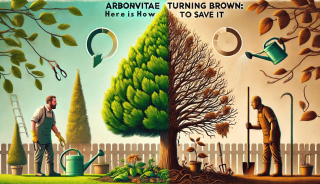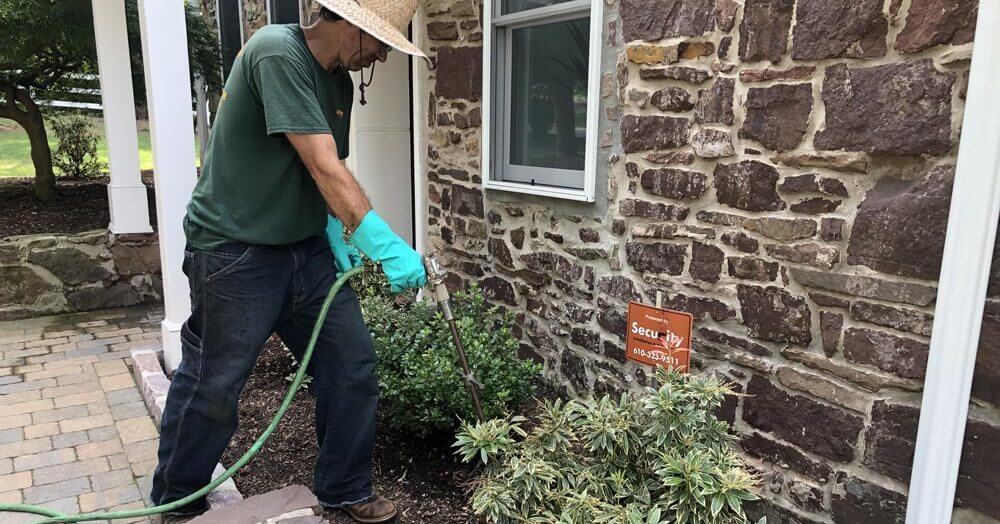When arborvitae's lush, vibrant green shifts to an unsightly brown, it can be a concerning sight for any homeowner or gardener. Thankfully, many cases of browning in arborvitae are treatable.
Strobert Tree Services, your expert in tree care across Delaware, Pennsylvania, and New Jersey, is here to guide you through understanding why your arborvitae is turning brown, how you can save it, and when it might be time to consider removal.
Why Is Your Arborvitae Turning Brown?
Arborvitae trees, known for their thick foliage and robust appearance, can turn brown for several reasons. Identifying the root cause is the first step toward remediation:
- Water Stress: Both overwatering and underwatering can cause stress to arborvitae, leading to browning leaves.
- Pest Infestation: Bugs like spider mites and bagworms are common culprits that feed on the sap and leaves, weakening the tree.
- Fungal Diseases: Root rot and other fungal infections can disrupt the nutrient uptake, causing the foliage to die off.
- Environmental Stress: Extreme temperatures, windburn, and salt damage from road salting can also lead to discoloration and browning.
Understanding the specific cause of browning is crucial, as it determines the appropriate response to salvage your tree.
How to Save a Browning Arborvitae
If you've noticed your arborvitae turning brown, don't despair. There are several steps you can take to save your tree potentially:
- Proper Watering: Ensure your arborvitae receive just the right amount of water. The soil should be moist but not waterlogged. During dry spells, deep watering once a week is beneficial.
- Pest Control: Inspect your tree for any signs of pest infestation. Treat infestations with appropriate insecticides or introduce natural predators like ladybugs.
- Pruning: Remove any dead or diseased branches to help reduce tree stress and prevent disease spread.
- Mulching: Apply a layer of mulch around the base of your arborvitae. This helps retain soil moisture and protect the roots from extreme temperatures.
- Fertilization: Provide your tree with a balanced fertilizer to ensure it has all the nutrients it needs for recovery.
By following these steps, you can address the issues causing the browning and give your arborvitae the best chance at recovery.
When to Remove a Browning Arborvitae
Sometimes, despite best efforts, browning arborvitae may be beyond saving. Here are some signs that it might be time to remove your tree:
- Severe Browning: If more than 50% of the tree is brown, it's unlikely to recover.
- Structural Damage: Signs of severe structural damage, such as large broken branches or a tilting trunk, can pose safety risks.
- Advanced Disease: If fungal or bacterial diseases have taken hold and treatments have not been effective, removal might be necessary to prevent the spread to other plants.
If you decide that removal is necessary, it's essential to do so safely and effectively, preferably with the assistance of professionals like Strobert Tree Services.
Care Tips to Prevent Browning
Prevention is always better than cure. Here are some tips to keep your arborvitae green and healthy:
- Regular Inspection: Monitor your trees for early signs of stress or disease.
- Adequate Spacing: Ensure your arborvitae have enough space to grow without competing for resources.
- Proper Planting: To avoid environmental stress, plant arborvitae in well-draining soil and inappropriate sunlight.
- Seasonal Care: Prepare your trees for winter by wrapping them in burlap to protect against wind and salt damage.
Contact Strobert Tree Services
If you're facing challenges with your arborvitae or need professional tree care services, Strobert Tree Services is here to help. Serving Delaware, Pennsylvania, and New Jersey, we specialize in pruning, tree maintenance, and overall tree health management. Contact us today to ensure your landscape remains beautiful and healthy. Together, we can assess your arborvitae's condition and decide on the best action. Your tree's health is our top priority!
By following this guide and seeking professional help when needed, you can enhance the chances of saving your browning arborvitae and maintaining the aesthetic appeal of your landscape.











